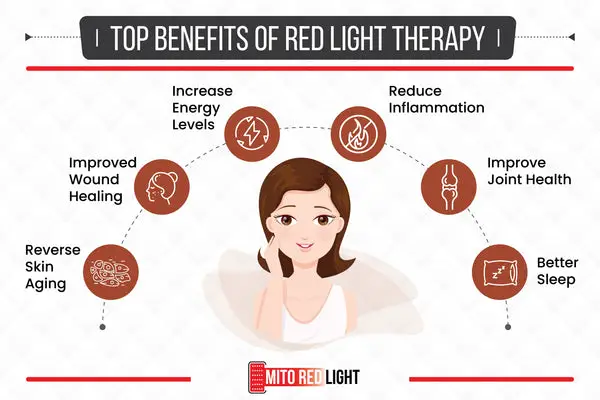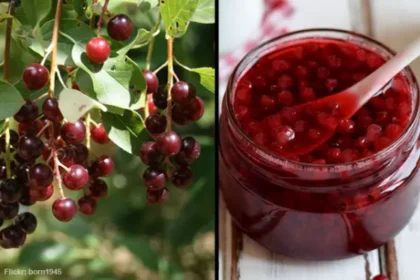If you live in the northern hemisphere like I do, than you’ve probably gone toe-to-toe with seasonal depression. For me, it creeps in right around this time of the year, like a thief in the night. Eventually I realize that I’m feeling a little off, and by then I’ve already taken shelter in my home, knee deep in a bowl of ice cream and some over dramatic Netflix series to soothe my woes, only to feel even worse the next day, and sometimes even spiraling out of control until finally, spring arrives, and my sanity returns.
Over the years, I’ve learned about many natural ingredients and practices that have helped me adapt to the frequent changes in weather. It’s allowed me to build a tool box of ways to boost my energy, serotonin, and natural dopamine release. Now, I rarely deal with the effects of Seasonal Affective Disorder, and if I do start feeling a little blue, I know I can do a quick self analysis and simply “reach for my toolbox.” Now, I’d like to share my toolbox with you.
Seasonal depression, also known as Seasonal Affective Disorder (SAD), is a type of depression that occurs at the same time each year, most commonly in the fall and winter months.
Symptoms of Seasonal Depression commonly include:
- Low mood, feelings of sadness, hopelessness, and irritability.
- Fatigue and low energy levels, making it difficult to complete daily activities.
- Changes in sleep patterns, such as oversleeping or insomnia.
- Changes in appetite, particularly a craving for high-carbohydrate foods, which can lead to weight gain.
- Decreased interest in socializing and activities they normally enjoy.
- Difficulties in focusing and concentrating, leading to decreased productivity.
It’s important to seek help if you experience symptoms of SAD, as the condition can significantly impact your quality of life. Treatments, including natural remedies and conventional therapy, are available to help manage the symptoms of SAD. It is thought to be caused by the reduction in sunlight during these months, which can disrupt the body’s circadian rhythm and lead to changes in the levels of certain hormones.
While medication and therapy are common treatments for SAD, natural alternatives are becoming more popular and sought out by the general public. I suspect this is because natural remedies don’t have potential long term and short term side effects or addictive qualities like prescription medications sometimes do.
From small changes to diet, spending time in nature, to exercise and using revolutionary light therapy, there are many natural treatments to seasonal depression that can provide relief without the use of prescription drugs. In this article, we will explore some of the most effective natural cures for SAD and how they can help you find happiness and balance during the darker months. Natural treatment options for SAD include a healthier diet, regular exercise, and red light therapy!
What is Red/Infrared Light Therapy?
Also known as red or near-infrared light, is part of the spectrum of light emitted by the sun. These wavelengths of light are “bioactive” in humans.
If you remember high school physics, when you pass white light through a prism, it separates out the different colors based on their wavelengths.
Only a tiny part of this spectrum is actually visible to the human eye. At the highest end of the visible light spectrum is red light, which goes from a little over 600nm to approximately 700nm. Above the visible light spectrum is near-infrared (NIR) from about 700nm to a little over 1,100nm. It is specifically these red and near-infrared wavelengths that have amazing effects on our bodies.
Thousands of studies have been done, and overall both red and near infrared light has been repeatedly shown to have positive effects on cell function in animal and human studies and aid in improving a wide range of conditions. These include the boost of serotonin production, hair-loss reversal, anti-aging, acne, wound healing, pain relief, fat loss, and more!
Why is Infrared light different? Most wavelengths of light (UV, blue, green, yellow, etc.) are unable to penetrate into the body – instead they stay in the layers of the skin.
Proven benefits of red and near infrared light therapy include:
- Promotes wound healing and tissue repair
- Supports collagen production / anti-aging
- Reduces swelling and inflammation (pain)
- Improves joint health
- Improves physical performance, muscle recovery and energy levels
Increases melatonin / improves sleep
Our evolutionary ancestors spent many hours each and every day outdoors receiving these beneficial wavelengths of light from the sun. Modern humans with our homes, transport and office spaces are extremely deprived of natural sunlight. Mito Red Light devices deliver healthy doses of these beneficial wavelengths of light allowing you to conveniently “supplement” that lack of sunshine, in the comfort of your own home.
To check out Mito Red Light Therapy, CLICK HERE!
Improvements in diet can benefit your mental health dramatically!
The idea of changing your diet, which can be somewhat daunting because most people equate hearing “go on a diet”, to some drill sergeant yelling at them and slapping junk food out of their hands. (At least that’s what I envision). The truth is, focusing on adding good things, rather them eliminating the bad things, is a great way to get yourself motivated. For instance, an addition of probiotic foods, such as yogurt or sauerkraut, can naturally boost the production of serotonin.
Here are some foods that can help fight off seasonal depression:
- Fermented foods – sauerkraut, yogurt, kefir, kimchee, etc.
These are foods that have been transformed through the process of fermentation, a process that involves the growth of beneficial bacteria. There is much evidence that suggests consuming fermented foods helps improve mood and reduce the symptoms of depression. Fermented foods are a source of probiotics, which have been shown to improve mood and mental health by regulating the gut-brain axis, increasing serotonin production, reducing inflammation, and regulating stress responses. Fermented foods can also be a source of vitamin B12, a nutrient that has been linked to improved mood and reduced symptoms of depression. B12 is particularly important for vegetarians and vegans, who may not get enough of this nutrient from animal products.- If you are interested in learning how to make your own fermented foods and drinks right in your own kitchen, improving your health and saving you money. Check out The Fermentation Method!
- Foods rich in omega-3 fatty acids, such as Flaxseed oil, Atlantic Mackerel, Salmon Fish Oil, Cod Liver Oil, Walnuts, Chia Seeds, Herring, Alaskan Salmon (wild-caught), Flaxseeds (ground), Albacore Tuna, Sardines, Hemp Seeds, Anchovies, Natto, and Egg Yolks.
- Some foods you want to stay away from despite the fact they may be advertised as high in omega-3s:
- Conventionally raised meat (non-organic or not grass-fed), which is lower in omega-3s than grass-fed types
- Farm-raised fish (especially common with salmon)
- Conventional and pasteurized dairy products, which may be hard for some people to digest.
- Krill oil supplements
- Some foods you want to stay away from despite the fact they may be advertised as high in omega-3s:
- Foods rich in folate, such as leafy greens (spinach, kale, and collard greens), lentils, and beans.
- Vitamin B12 is important for brain health and mood regulation, and can be found in animal products such as organic/farm raised meat, dairy, and eggs, or in fortified foods for vegans and vegetarians.
- Antioxidant-rich foods, such as berries (strawberries, blueberries, and raspberries), nuts, and dark chocolate, can help reduce inflammation in the body, which has been linked to depression and other mental health disorders.
There is also a variety of natural herbs and botanicals that can help combat depression and boost your mental health: Ashwaganda is a one i can vouge for, and it’s been used in Ayervedic medicine for centuries. I get my daily dose of ashwaganda along with many other Earth bearing ingredients from an immune boosting supplement called-
RADIATE IMMUNITY.
CLICK HERE TO LEARN MORE,
USE THE COUPON CODE JH10 FOR 10% OFF.
Just as it is important to add healthy foods to your diet to benefit your mental health, it is also important to limit or avoid certain foods, and even certain body and homecare products, as they can have negative impacts to your mental health as well as your physical health.
Here is a list of foods you should limit/avoid to fight off seasonal depression:
- Refined carbohydrates, such as white bread, pasta, and sugar, can lead to rapid spikes and crashes in blood sugar levels, which can negatively impact mood and energy levels.
- Processed foods are often high in sugar, unhealthy fats, and artificial ingredients, which can increase inflammation in the body and negatively impact mental health.
- Although caffeine can provide a temporary boost in energy and alertness, excessive consumption can lead to feelings of anxiety and restlessness, and can disrupt sleep patterns, which can negatively impact mental health. If you choose to use caffeine, try to limit your intake and consider a more natural source such as low-acidic coffee or tea.
- Although alcohol may provide a temporary escape from stress and anxiety, excessive consumption can lead to feelings of depression and anxiety, and can disrupt sleep patterns, which can negatively impact mental health.
- A diet high in saturated and trans fats, found in foods such as red meat, butter, and baked goods, can increase inflammation in the body and negatively impact mental health.
It’s important to remember that everyone’s dietary needs are unique and what works for one person may not work for another. You should do your best to maintain a balanced and varied diet, as a poor diet can negatively impact mental health tremendously. Keep in mind that dietary changes are not a substitute for medical treatment for depression and other mental health disorders, and it’s important to seek professional help if you’re struggling with your mental health.
Artificial fragrances can also have a negative effect on your mental health.
These are most commonly found in personal care products, cleaning products, and air fresheners which can cause:
- Allergic reactions, which can lead to obvious irritations physically but also feelings of discomfort and anxiety.
- Chemical sensitivities, which can cause headaches, dizziness, and other symptoms that can negatively impact mental health.
- Indoor air pollution, which can be particularly harmful for people with respiratory issues and can lead to feelings of discomfort and anxiety.
- Hormonal disruptions, which can detrimental impacts to your mental health. For example, phthalates, which are commonly found in artificial fragrances, have been linked to a reduction in testosterone levels in men, which can lead to feelings of depression and anxiety.
It’s important to be mindful of the artificial fragrances you’re exposed to, as well as the personal care and cleaning products you use. This can include laundry detergent, softener, dish detergent, hang soap, hand sanitizer, lotion, body wash, shampoo, conditioner, perfume, air deodorizers, room fresheners, carpet fresheners, cleaning products, and even some feminine hygiene products. Choosing fragrance-free products and using essential oils or other natural alternatives can help reduce your exposure to harmful chemicals and protect your mental health.
Exercise has been shown to have a positive effect on mental health and can be an effective way to treat seasonal depression.
Physical activity has been shown to:
- Increase endorphins, which are natural mood boosters and pain inhibitors.
- Reduce stress levels by reducing the level of the stress hormone cortisol in the body.
- Improve sleep quality and quantity, which can help alleviate symptoms of depression.
- Increase self-esteem and improve body image which can boost confidence and reduce symptoms of depression.
- Provide a sense of accomplishment and give people something to look forward to, which can be especially helpful for people who are feeling down.
I’ve found the best way to incorporate some form of movement and exercise into my daily practice is by finding something that I love to do. This helps it be enjoyable, and makes the time pass quicker. I’ve found great joy in gardening, playing sports, taking walks in nature, dance, and yoga.
In conclusion, there are many natural ways to treat seasonal depression, including exercise, light therapy, spending time in nature, and changing your diet. It’s important to remember that while these methods may be helpful, they should not be considered a replacement for professional medical treatment if needed. If you are experiencing symptoms of depression, it’s important to talk to a mental health professional to get a proper diagnosis and treatment plan. Everyone’s experience with seasonal depression is unique, so it’s important to find the approach that works best for you. With the right support and self-care, you can feel better and enjoy the holiday season to the fullest.













